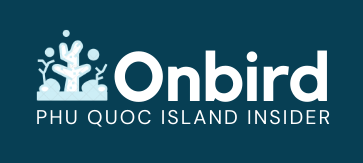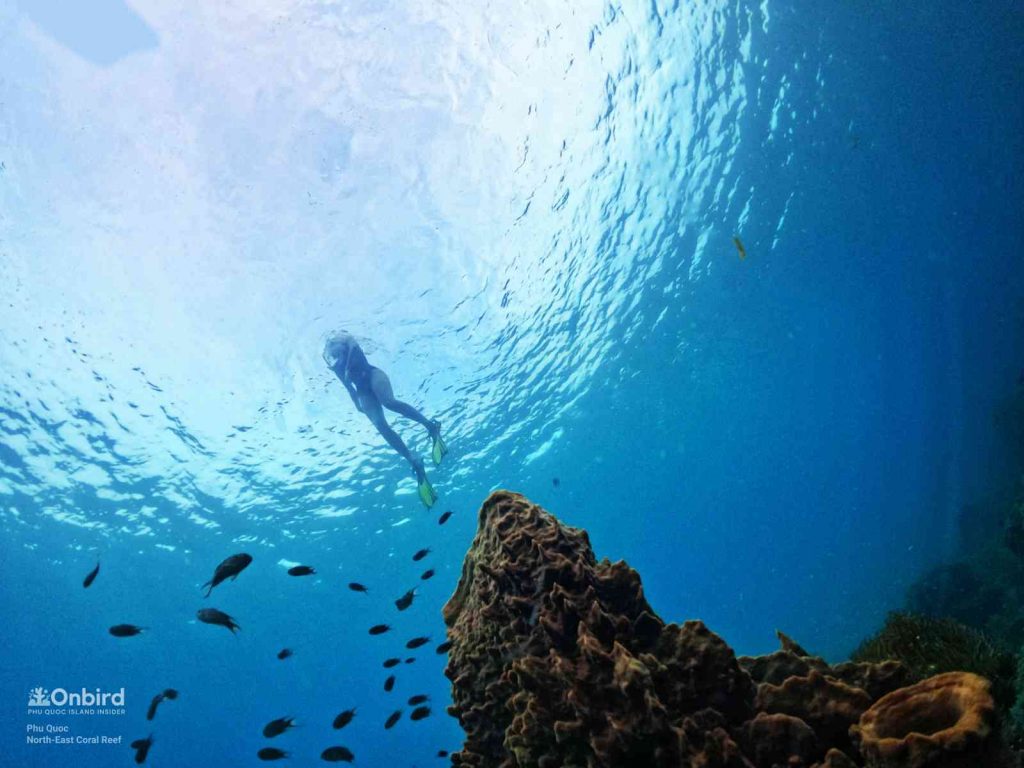This article by OnBird Phu Quoc, a reputable operator specializing in Snorkeling and Scuba Diving on Phu Quoc Island, Vietnam, aims to elucidate the factors that significantly influence the snorkeling experiences of enthusiasts and divers, as well as individuals intrigued by marine life. It offers an in-depth analysis of the optimal snorkeling conditions in Phu Quoc Island, Vietnam, and various other global destinations.
MAIN CONTENTS
Misinformation Regarding Snorkeling and Diving Time in Phu Quoc Island.
Question: When seeking guidance on the optimal snorkeling and diving times in Phu Quoc Island, Vietnam, a multitude of search results may emerge. However, many of these sources offer redundant and unreliable information, as illustrated below:
“The best period for snorkeling in Phu Quoc spans from November to April during the island’s dry season, characterized by tranquil and transparent waters. This timeframe not only offers ideal conditions for snorkeling but also presents an opportune moment to explore the island and engage in various outdoor pursuits“.
“Though the best time of the year is generally from November to April, anytime when the sun out and the sea is calm is a great time to hit the water to enjoy some great diving & snorkeling.“
“The best time to snorkel on Phu Quoc Island is the dry season. The dry season runs from late October to mid-May. This time the rains have ceased and the waves are not intense, Phu Quoc sea is very calm, clear, blue, lots of sunny, and the visibility under the water is clear and better.“
Advanced insights from OnBird: Engaging in snorkeling and diving activities in Phu Quoc during the dry season may not be optimal. The dry season often presents unfavorable water conditions and the intense sunlight can diminish the overall snorkeling experience. Although the dry season offers advantages like clear skies and reduced risk of thunderstorms, the conditions for snorkeling and scuba diving are somewhat restricted. Visibility underwater is notably poor during extended periods, typically limited to 3-4 meters due to current and wavy water in the South of Phu Quoc Island in the dry season. The challenging conditions of the location necessitate that the tour operator possess a comprehensive understanding of the local water conditions. This knowledge is essential for selecting the optimal timeframe during the day when conditions are most favorable for snorkeling and diving activities.
Water conditions: encompassing factors such as underwater visibility (turbidity), water current, wave direction, wave and tide levels, and lighting effects, play a crucial role in determining the quality of your snorkeling and diving excursions. Optimal conditions, characterized by clear underwater visibility and tranquil seas with light currents, enhance the overall experience. When evaluating water conditions, it is advisable to assess them on a daily basis, considering geographical nuances for precise predictions rather than relying on monthly evaluations. OnBird undertakes the task of creating tailored forecasts by analyzing historical hydrological data systematically, ensuring accurate projections of water conditions for specific dates.
Gain a deeper understanding of the rainy season, also known as the wet season, in Phu Quoc: Exploring the rainy season, also known as the wet season, in Phu Quoc reveals a favorable period for snorkeling and diving. Contrary to common belief, the rainy season in Phu Quoc can be divided into two distinct phases: summer and autumn. According to data collected by OnBird, the initial phase of summer typically offers optimal conditions for water exploration in Phu Quoc, boasting excellent underwater visibility (8-9 m at best) and pleasant water temperatures. Despite occasional heavy rains during this period, they do not seem to impact the underwater visibility significantly, highlighting that rainfall does not necessarily affect underwater conditions.
A videos of soft-adventure snorkeling recorded by OnBird team in the rainy season (August 2023)
What Factors Truly Influence Your Snorkeling Experience?
Snorkeling is a popular open-sea water activity where safety is paramount. This involves considering factors such as wave intensity, direction, water currents, and underwater visibility, collectively referred to as water conditions. Additionally, snorkeling typically involves exploring shallow waters ranging from 0.5 to 10 meters deep. Within this depth range, the most captivating sights often include marine life like fish and vibrant coral reefs. To appreciate coral formations in their full splendor, optimal underwater visibility, aided by suitable lighting conditions, is essential; excessive sunlight can detract from the snorkeling experience. It turns out strong sunlight turns out bad for snorkeling from OnBird’s observation.
To truly enhance your snorkeling experiences, it is essential to consider various factors such as water conditions and lighting effects. This necessitates a comprehensive understanding and advanced knowledge of the environment.
What Are The Defining Characteristics Of “Scientific Snorkeling” Organized by OnBird Phu Quoc?
OnBird’s scientific snorkeling excursions (Multi-level snorkeling & Advanced Snorkeling) are meticulously curated with a foundation of expertise in Phu Quoc Island’s aquatic environments and coral reefs. Our offerings are tailored with a keen awareness of water conditions, including the dynamic changes that occur. Moreover, we factor in lighting considerations to enhance the overall snorkeling experience. OnBird has developed an in-house water conditions forecasting model, enabling us to offer guests advanced guidance on optimal snorkeling and coral exploration opportunities.



